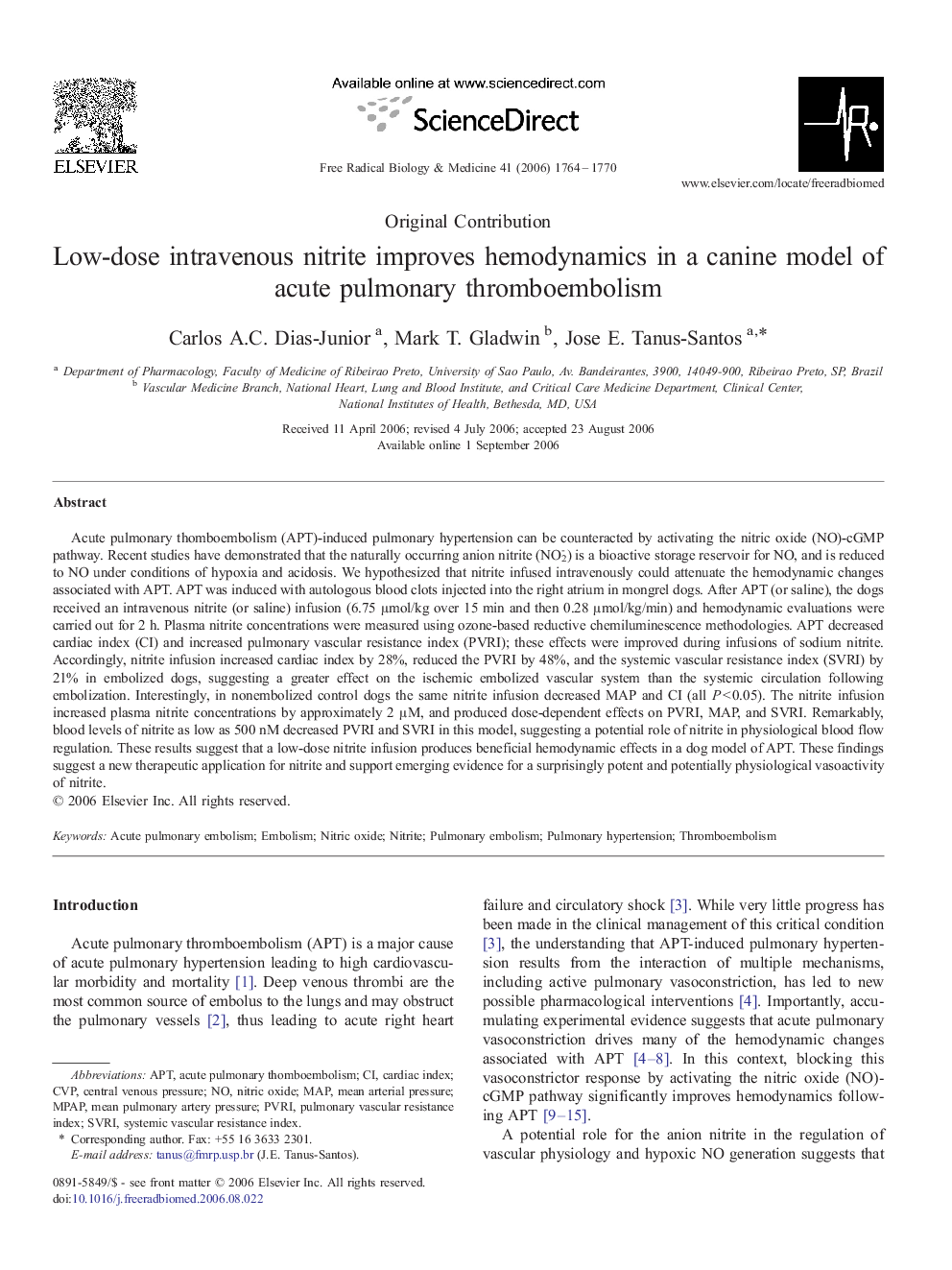| Article ID | Journal | Published Year | Pages | File Type |
|---|---|---|---|---|
| 1911942 | Free Radical Biology and Medicine | 2006 | 7 Pages |
Acute pulmonary thomboembolism (APT)-induced pulmonary hypertension can be counteracted by activating the nitric oxide (NO)-cGMP pathway. Recent studies have demonstrated that the naturally occurring anion nitrite (NO2-) is a bioactive storage reservoir for NO, and is reduced to NO under conditions of hypoxia and acidosis. We hypothesized that nitrite infused intravenously could attenuate the hemodynamic changes associated with APT. APT was induced with autologous blood clots injected into the right atrium in mongrel dogs. After APT (or saline), the dogs received an intravenous nitrite (or saline) infusion (6.75 μmol/kg over 15 min and then 0.28 μmol/kg/min) and hemodynamic evaluations were carried out for 2 h. Plasma nitrite concentrations were measured using ozone-based reductive chemiluminescence methodologies. APT decreased cardiac index (CI) and increased pulmonary vascular resistance index (PVRI); these effects were improved during infusions of sodium nitrite. Accordingly, nitrite infusion increased cardiac index by 28%, reduced the PVRI by 48%, and the systemic vascular resistance index (SVRI) by 21% in embolized dogs, suggesting a greater effect on the ischemic embolized vascular system than the systemic circulation following embolization. Interestingly, in nonembolized control dogs the same nitrite infusion decreased MAP and CI (all P < 0.05). The nitrite infusion increased plasma nitrite concentrations by approximately 2 μM, and produced dose-dependent effects on PVRI, MAP, and SVRI. Remarkably, blood levels of nitrite as low as 500 nM decreased PVRI and SVRI in this model, suggesting a potential role of nitrite in physiological blood flow regulation. These results suggest that a low-dose nitrite infusion produces beneficial hemodynamic effects in a dog model of APT. These findings suggest a new therapeutic application for nitrite and support emerging evidence for a surprisingly potent and potentially physiological vasoactivity of nitrite.
